The following blog entry is a brief discussion about potential way to set up employee data replication from SFEC to SAP ERP using the Business Integration Builder (BIB).
SPRO à Personnel management à Integration with Success Factors Employee Central à Employee data integration.
Define Template Group to be used for Employee Data Replication from EC
In this customizing activity we define the template that we will use to replicated additional employee data from Employee Central (EC) to SAP ERP.
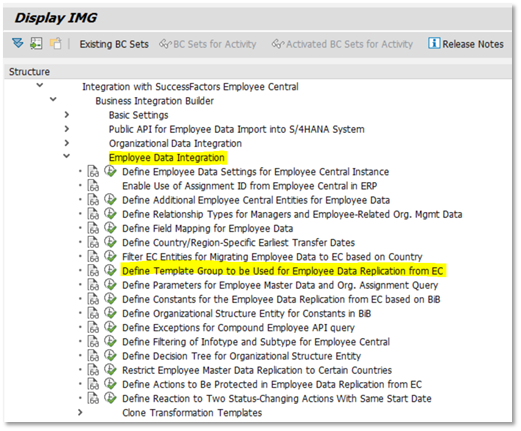
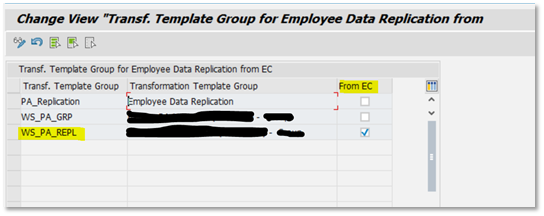
Define Parameters for Employee Master Data and Org. Assignment Query
In this Customizing activity you configure settings for the Create and Execute Employee Master Data and Org. Assignment Query (ECPAO_EE_ORG_REPL_QUERY) program. The program use these settings when creating a query to replicate employee master data (and organizational assignments, if applicable) from Employee Central to SAP ERP system.
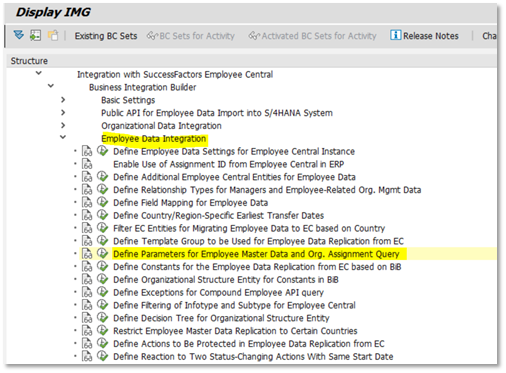
Some of the parameters that can be defined here are the following:
- Transformation template group for employee data replication.
- Employee Company and/or Country: This setting can ensure only the employee data for employees in a certain company/country, respectively.
- Type of workforce: Here we can specify which type of workforce we replicate to SAP ERP. Possible options are: Contingent workers, Internal employees, or both at the same time.
- Replicate org. assignment checkbox: We will enable this checkbox to replicate employee organizational assignment.
- Exclude org. assignment for employees with employee status: this feature is used to exclude the organizational assignment for employees with status terminated, long sickness absence, etc.
- Target system: Indicates the ERP target system.
- Multiple jobs events per day: we will enable this setting if we want to allow the replication of more than one event reason change on the same day in the job information portlet in EC.
Define field mapping for employee data
In this customizing activity we will map SAP ERP fields and Success Factors employee central fields. To map the portlets where we have employee data that we want to replicate to SAP ERP. We will use the replication template that we´ve defined in the previous customizing activity. Most of the employee data we would replicate back to ERP, can be map to one corresponding field in SFEC. However, there are some data that needs to be modified or process (following some customer requirements/logic or just adapting the format to what is acceptable in SAP ERP) before updating the infotype database. To do so, we need to activate, create and hard code the logic inside a BAdI.
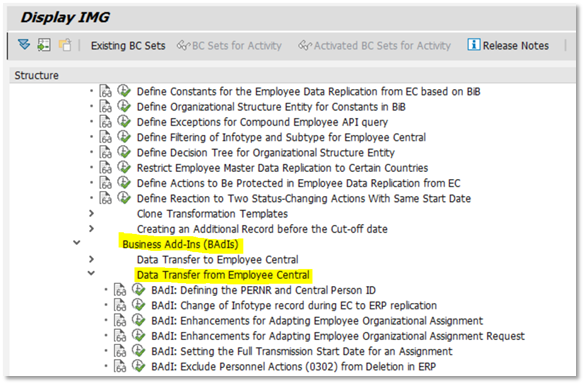
When we replicate employee data from SFEC, we will, most likely, deal with the so-called „Decoupled Infotype Framework“ (DIF). To find this setting follow the path below:
SPRO à Personnel management à Personnel administration à Customizing procedures à Infotypes à Infotypes in detached Infotype framework.
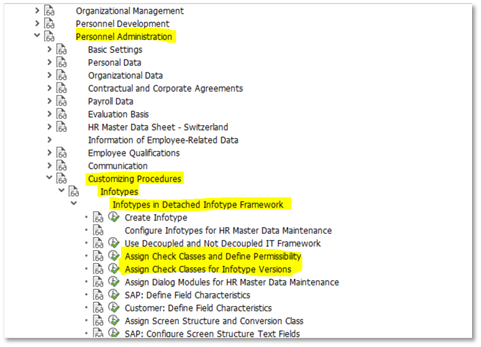
In this feature we can check which class is used to process and store the employee data in the database for a certain infotype and based on the employee country. This is useful when analyzing errors during the replication.
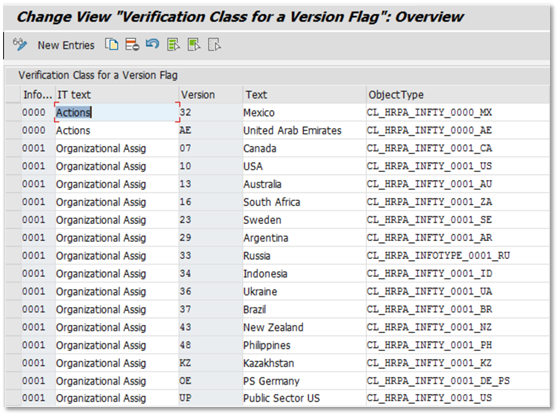
Hint: These classes are easy to recognize, they have the form: „CL_HRPA_INFTY_XXXX_AA“, where XXXX is the infotype and AA represents the ISO country code.
Another important point while working with the DIF, are the fields that are set as: required, not used, etc.
To check which values are being used by the standard customizing propose by SAP, please, look at the table „V_T588MFPROPS“. Depending on the customer requirements, we may modify the standard customized values used by SAP to get the desired result, to do not replicated a certain field for a certain country, for instance. We will need to customize our custom table „V_T588MFPROPC“, to be able to overcome the effect of the SAP standard customizing.
Define filtering of Infotype and subtype for employee central
We will use this customizing activity in the BIB to filter out certain infotypes/subtypes for certain countries. Additionally, it is also possible to filter for some employee category (internal or external employees).
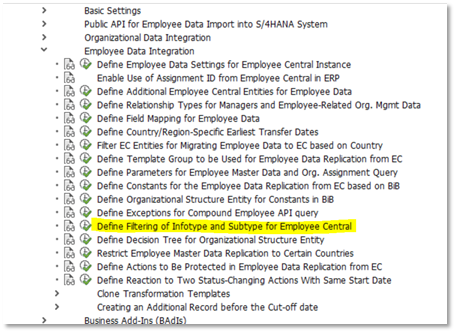
Procedure to replicate one employee from SFEC to SAP ERP
To replicate a single employee or a bunch of employees from SFEC to SAP ERP we will used the standard report: Create and Execute Employee Master Data and Org. Assignment Query (ECPAO_EE_ORG_REPL_QUERY) report:
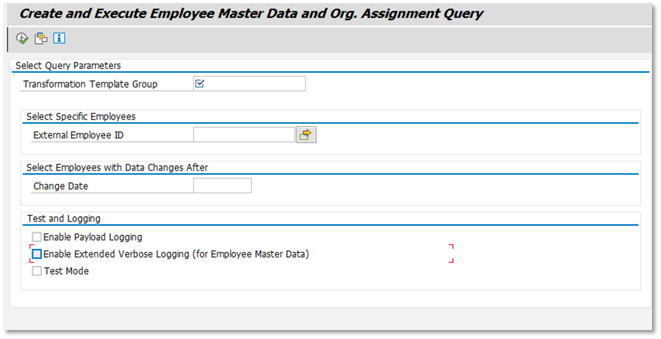
The employee replication is a straightforward process. As you can see in the screenshot, there are few input parameters that needs to be inserted in the report. The information we need to enter to the report is:
Input parameters for „ECPAO_EE_ORG_REPL_QUERY“ report:
- The transformation template group. This refers to the template we´ve defined for replication.
- The external employee ID: This refers to the person ID used in employee central. This ID is typically mapped to the central person (CP) id in SAP ERP.
- Enable Payload Logging: Select this checkbox to transfer extended information to the process log in the middleware to be able to analyze issues more easily.
- Enable Extended Verbose Logging (for Employee Master Data): Select this checkbox to transfer extended information about employee master data replication to the Verbose log.
- Test mode: We use this checkbox to update the data base if there are any change in the employee data or not.
Once we run the report, we will navigate to transaction SLG1 to see how the processing was.

If we marked the „Enable Payload Logging“ before running the report, we will be able to see a detailed description of the error (red light, like in the example shown here). If no error occurred during the replication, we will be able to see a green light and information of the updated infotype, if there were any change in SFEC before running the employee replication report.
If we ticked the checkbox „VERBOSE logging“, we can see a detailed information of the fields mapped between SFEC and ERP system and the values sent from SFEC. Therefore, the errors analysis much becomes easier.
Links and references
For more information please refer to the standard SAP Documentation. Have also a look at our other articles regarding the business integration builder.

Keine Kommentare